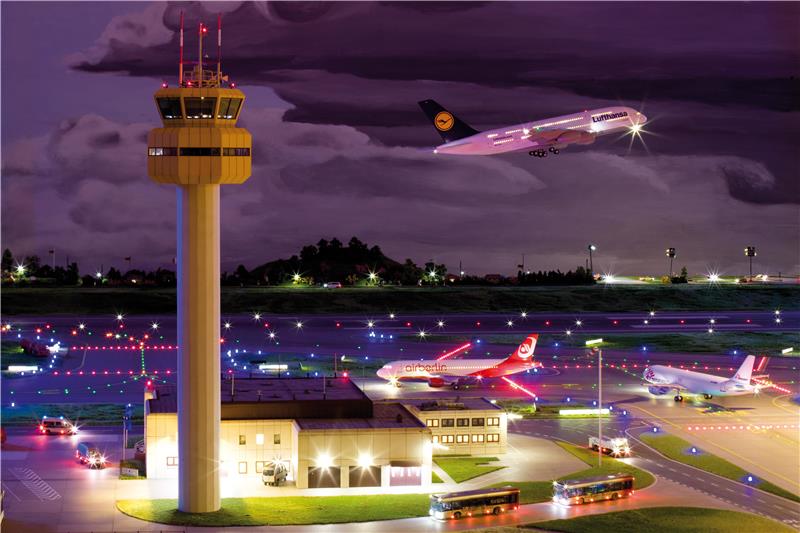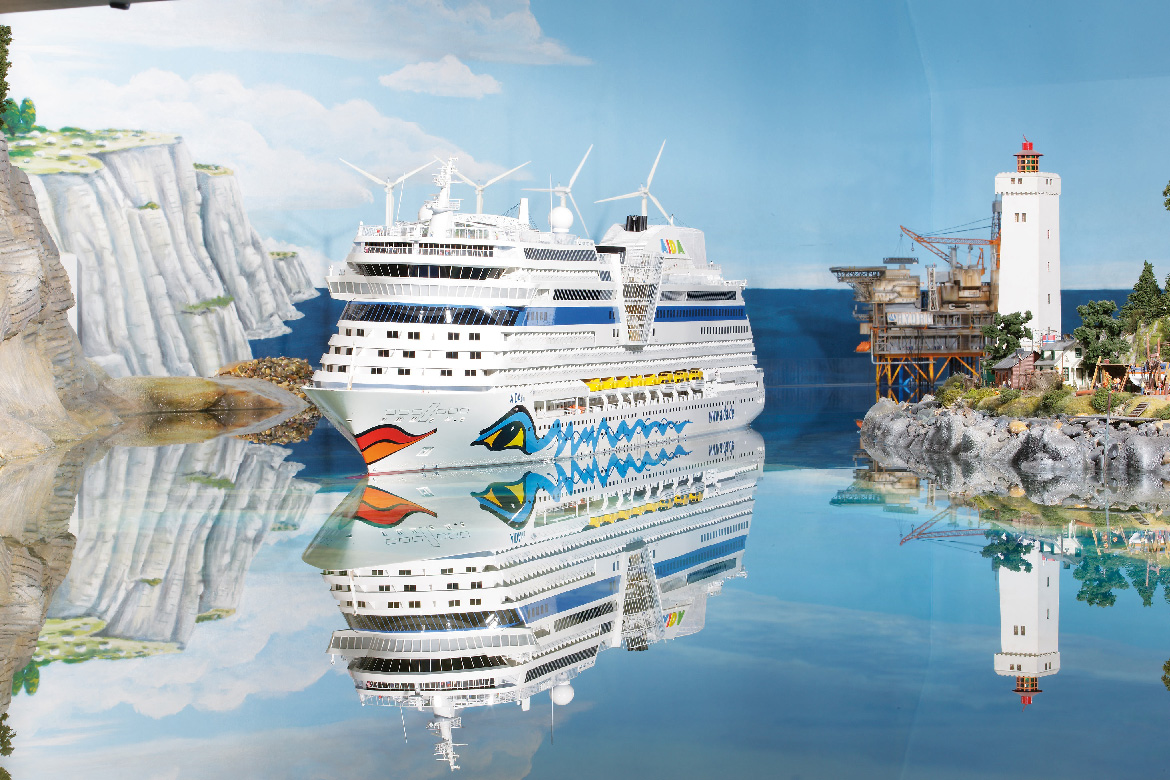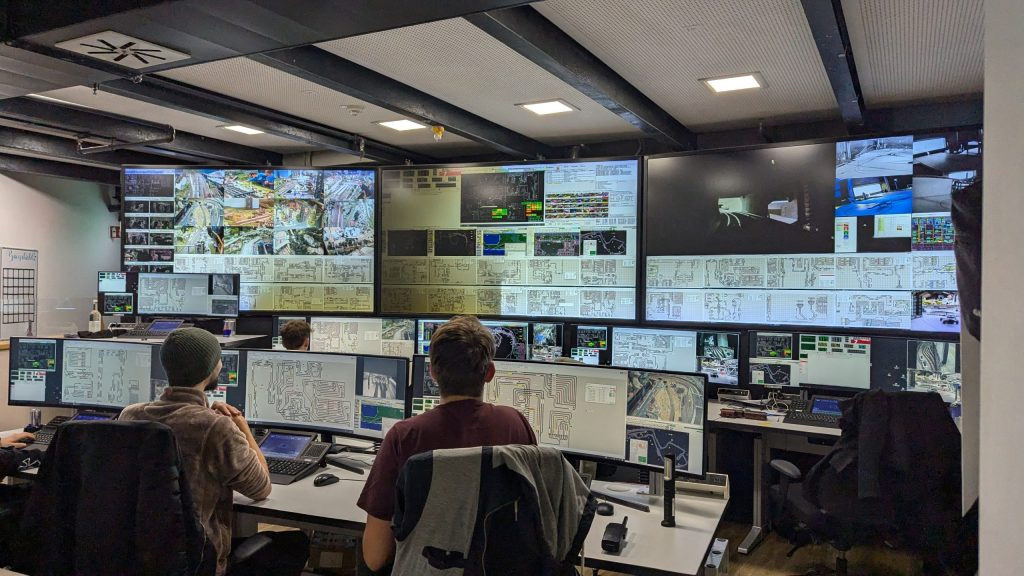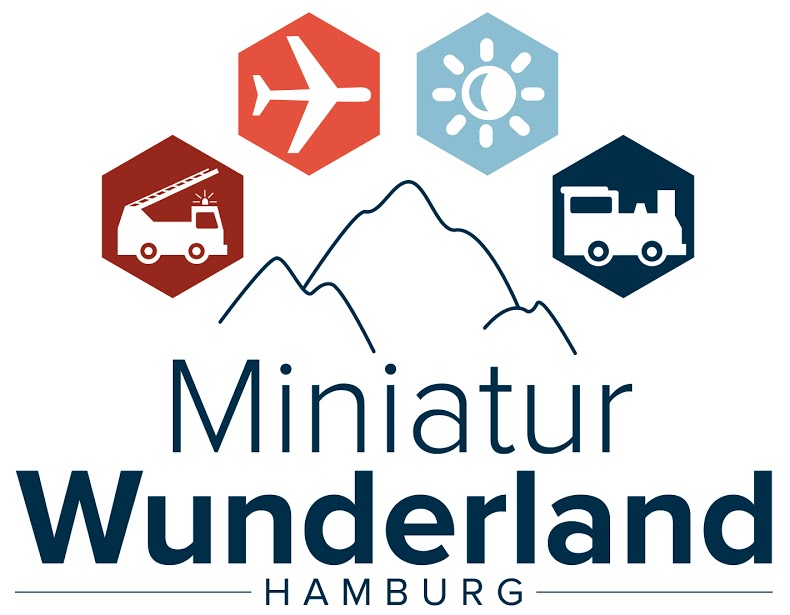
Miniatur Wunderland Hamburg
Applications
Operation of the Miniatur Wunderland
Formats Tools Used
 Delphi
Delphi
Challenges
- Control of the world's largest model railway with over 1,000 trains, 9,000 cars, 385,000 lights, and much more in 1,500 m² of space.
- Operational 365 days per year up to 20 hours per day / very little downtime
Results
- Flexible and Scalable
- High operational reliability
The largest model railway in the world "Miniatur Wunderland" is located directly on the Elbe in Hamburg's Speicherstadt warehouse district.
Hamburg's number-one tourist attraction and Germany's most popular site attracts 1.5 million visitors from all over the world to its exhibition floors every year and inspires model railway enthusiasts. A unique miniature world has been created on 1,700 square metres of model space in around 1.2 million hours of work. In addition to sophisticated technology, it is characterised above all by its wealth of detail, with 290,000 lovingly staged figures, moving trains and cars, ships, and even aeroplanes that take off from Knuffingen Airport every minute. It is a breathtaking miniature cosmos that cannot be seen anywhere else in the world.
The Challenge
The construction of Miniatur Wunderland began in the year 2000. Many people initially laughed about this project started by twin brothers Gerrit and Frederik Braun and Stephan Hertz. However, the laughter turned into songs of praise by the time it opened in 2001. The installation is an invitation to dream. It not only shows detailed miniature scenes from all over the world, but also highlights current events.
Being open 365 days a year, with all systems having to be virtually permanently available on workdays, Sundays, and public holidays, requires not only a great deal of commitment from the 400-plus employees but also hardware and software that can cope with these challenges. The various system components and subsystems have to be controlled synchronously, not only the 1,200 trains but also the more than 520,000 lights, 11,000 cars, 52 aeroplanes, and 16 ships in the fictitious town of Knuffingen. The movement of the cars has to be synchronised with the traffic light signals, for example, and the lighting of the streets and houses has to be synchronised with the day and night mood of the overhead lighting.
We need a high degree of reliability for the operation at Wunderland. With Delphi, we have been experiencing this for over 20 years.
Daniel Wolf, Minatur-Software-Developer
The Applications
These incredibly complex technical challenges—where pretty much everything you can see, smell, hear, and (not) touch is driven and controlled by very clever technology and where the sounds of the engines of speeding racing cars, the noise of excited spectators, and the hustle and bustle of an airport are all precisely intertwined—are where very different Delphi programmes have been working in the background for over 20 years, keeping the wide-ranging software landscape running. The Delphi-based code base now comprises around 1 million lines.
Of course, operational applications such as the ticketing system with waiting-time management, warehouse management, and staff time recording are also reliable Delphi applications.
All vehicles, aeroplanes, and ships are controlled, and their routes are planned and monitored. Events such as fire brigade operations are controlled and directed to the relevant location so that they are given priority over other vehicles on their route there. The cars are managed by a ‘controlled coincidence’, which ensures that cars use a wide variety of routes and thus contribute to a lively image of the system. Nevertheless, rules are followed. In Wunderland, for example, even small cars must drive on the right, junctions are kept clear during traffic jams, and heavy goods vehicles are not routed through the centre of Knuffingen if they can find other routes.
Formula 1 in Monaco
The latest project from the Hamburg miniature builders is beyond anything seen before—Monaco and the realistic Formula 1 race on a 24-metre-long race track.
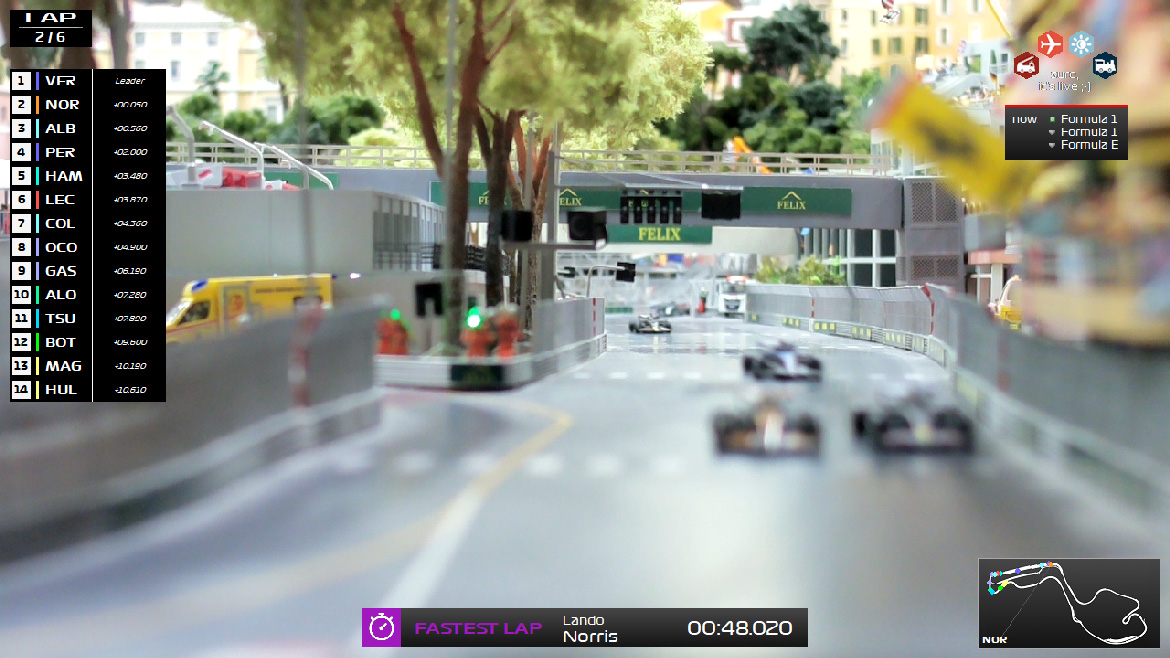
Formula 1 and Formula E races are held on this circuit. Each racing series comprises 20 cars, with a maximum of 14 on the track at any one time. The reduced starting field is due to the adapted city layout, which has been kept as close as possible to the original layout of the city of Monaco. Some parts of the city had to be ‘compressed’ a bit so that the entire city could be depicted.
In a real race, the cars can reach speeds of almost 300 km/h (about 185 mph). Scaled down to the Miniatur Wunderland, this corresponds to around one metre per second (about 39 inches per second). To enable course corrections and avoid collisions, the calculation threads are figured 10 seconds in advance. In the event of a conflict, part of these calculations may have to be discarded if a car realises of its own accord that an overtaking manoeuvre is not working or if the car is instructed by race control to allow the following vehicle to pass (‘blue flag’). This shows that all racing cars are intelligent and make their own decisions!
All races are calculated live, each car is given its own race strategy, and each driver from the current global rankings is subject to different parameters that control the race differently. The Delphi code also generates random values so that the miniature Max Verstappen does not always win.
The Miniatur Wunderland is controlled by Delphi, and everything happens live and in real time. The central component is the Carsystem software written in Delphi. This is where the magic happens.
The Vehicle Drive System
How does the unique drive system of the cars work? Due to their size of around 5 cm, the vehicles have neither a gearbox nor a motor—or even a battery. They are propelled by a magnetic field generated in the road surface, a ‘Halbach array’, and localised and controlled by a second layer under the road surface, which is equipped with sensors. As a result, if a vehicle is manually stopped on the track, the tracking system activates the display of yellow flags for this sector. This allows the route of the other vehicles to be checked and, if necessary, recalculated so that they drive around the obstacle.
Delphi is the most popular development tool at our office.
Daniel Wolf, Minatur-Software-Developer
Needless to say, many other incredible Delphi projects exist in Miniatur Wunderland, such as the live TV broadcast, which shows 29 video streams from various Raspberry Pi cameras on two-inch miniature displays at the side of the track, just like in the real race. But the visitors to the Wunderland can also watch the race on large monitors. When these recordings take place entirely on a scale of 1:87 and there are no reference objects in the picture, the boundary between miniature and original becomes blurred for the viewer. The result is a fascinating interplay of scales.
An additional project, which originated in the context of Formula 1 but now has several uses, is the sound matrix. The small Formula 1 cars do not emit any sounds, so their noises have to come from 19 speakers distributed around the race track. With the help of the external library BASS.DLL, the appropriate sound for the driving situation (acceleration, braking, full throttle, idling, etc.) of a vehicle is played to the appropriate speakers so that the position of the audio source corresponds to the actual position of a Formula 1 car. This sound matrix is also used in a modified basic configuration at Knuffingen Airport, where it provides the sound for flight operations.
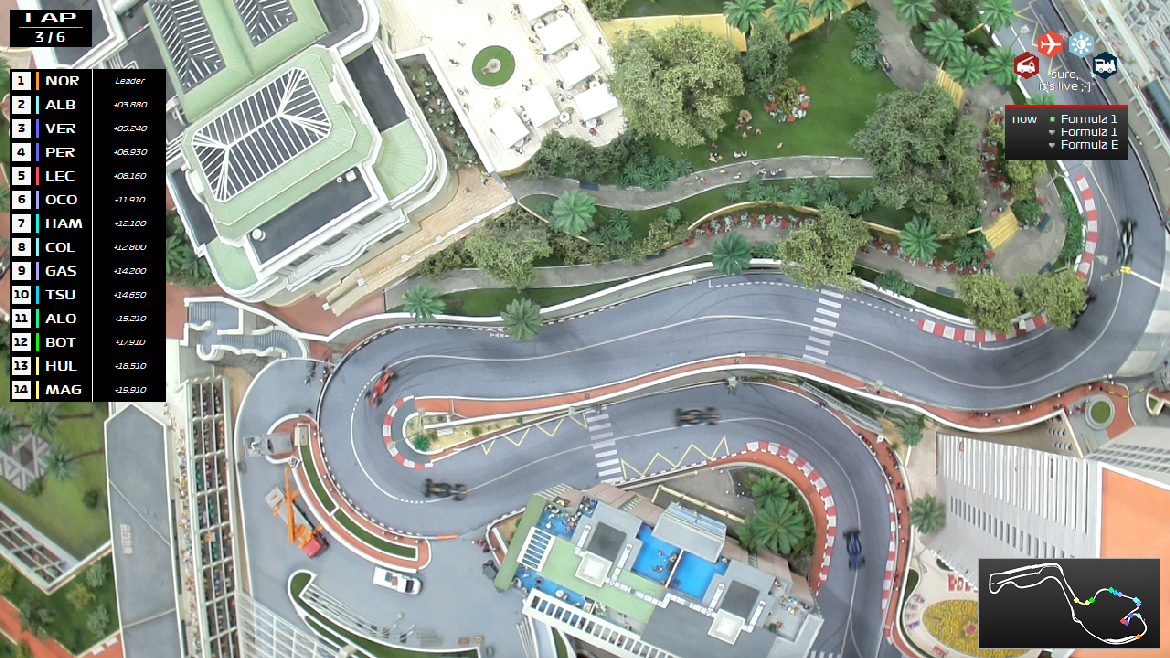
The Miniatur Wunderland Skycam View
Another application that has helped a lot with development is the error analysis. The team can connect to the Formula 1 system via laptop in order to retrieve and analyse the operating parameters. Here, too, the technicians were able to utilise the strengths of Delphi, as it is comparatively easy to visualise the performance of large amounts of data. The data and insights gained in this way meant that the driving manoeuvres of the Formula 1 cars could be worked out even more precisely, enabling, among other things, more overtaking manoeuvres on the track, which was very narrow in the original.
The basic concept of the software that controls the Formula 1 track originates from previous projects such as the harbour, the airport, and the vehicles in Knuffingen. This control system is responsible for planning and monitoring routes and controls all events such as the fire brigade operations, for which the vehicles are directed to the respective location and are given priority over other vehicles on their way there. But that's not all: the software pays attention to the general right-hand driving rule, guides large transports such as articulated lorries and their convoys via bypasses, and sets the flashing warning lights if vehicles have to stop at the end of a traffic jam on the motorway.
The lighting control system, which controls not only the lights on all systems and vehicles but also the ceiling light, creates impressive day and night scenes. The different areas are perfectly synchronised so that the lights on the vehicles and in the houses come on exactly when dusk sets in.
New projects
The construction phase for the upcoming project of a miniature Asia and its megacities will result in completely new challenges, particularly in the area of lighting control: Their skylines are illuminated at night, and entire skyscrapers become projection surfaces. Broken down to a scale of 1:87, a high-rise building will be around 1.80 metres high. Up to 7,000 LEDs per building will illuminate the facades and must be individually addressed for this purpose. Technical planning begins in 2025 in close collaboration with the hardware developers.
With Delphi as the Primary Development Tool, we can cover all the diverse requirements at Wunderland
Daniel Wolf, Minatur-Software-Developer
Conclusion
Miniatur Wunderland is an excellent example of what can be achieved with Delphi and a lot of talent! For over 20 years now, Delphi has established itself as an investment-safe and reliable development tool, which on the one hand protects the software portfolio and on the other hand continuously provides new possibilities.
As a result, it was—and is—possible not only to manage projects that have grown over time but also to shape them and thus respond to completely new requirements. The planning of new projects is already underway so that millions of people can continue to enjoy them.
Visit the website of Miniatur Wunderland to learn more about the technology, and the various ‘worlds of wonder’. The Formula 1 blog can be viewed here.

